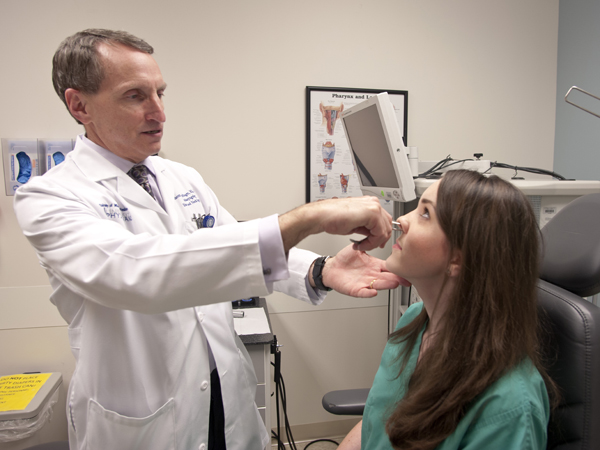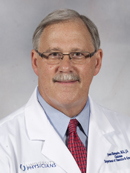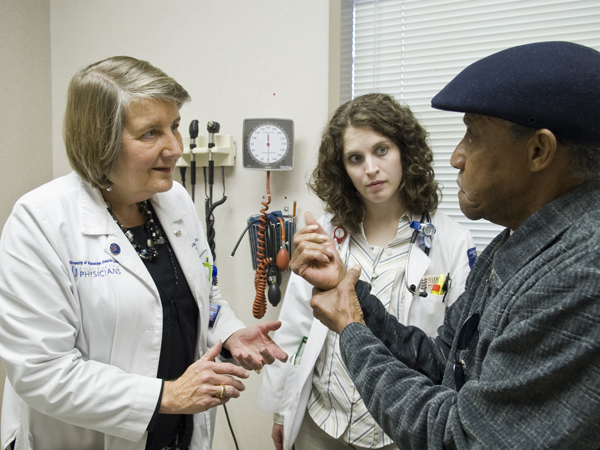Under new management: University Physicians

The management structure of UMMC’s University Physicians is being updated to ensure delivery of the very best patient-centered, physician-led care.
It’s a change that UMMC employees who are patients won’t notice when they have an appointment at any of the University Physicians practice sites, but they and all who visit UP’s more than 630 physicians and advanced practice health-care providers will nevertheless benefit.
“What we hope this will do is reorganize the clinical enterprise in a way that there is truly a physician voice and leadership in all of the areas that touch our patients when they walk into any clinical area – and everywhere that our patients are cared for, and where our providers practice,” said Dr. Diane Beebe, professor and chair of the Department of Family Medicine.
“Decisions that are made behind the scenes, whether they be scheduling or policies and protocol, affect the ability of our providers to give the best patient care. We hope this will create a seamless communication and collaboration between all of our areas.”
The changes include formation of a new Council of Clinical Chairs composed of the 17 clinical department chairs in the School of Medicine. Representing the chairs as chief physician executive and serving as their “managing partner” is Dr. Scott Stringer, professor and chair of the Department of Otolaryngology and Communicative Sciences. Stringer was the unanimous choice of the department chairs to lead the council.
“Health care is changing so fast, and we have to adapt,” Stringer said. “At this point, a new structure is the best way to have the best patient-centered, physician-led, and professionally managed care. Otherwise, you can have management and physicians going in different directions, and not the most high-quality care.”

Due to the restructuring process, “from point A to point Z, we will be improving the patient experience, which includes access, provider availability, collaboration and integration of care,” said Dr. James Shwayder, professor and chair of the Department of Obstetrics and Gynecology, who was elected vice chair of the just-formed council.
The restructuring is in keeping with other large physician practices that are affiliated with a partner hospital. “Most academic medical centers create some place for physicians to practice to support their mission,” Stringer said.
It’s a necessary step in UP’s evolution, one that will better link Medical Center administrators with clinical departments to make sure all are pursuing the same goals for patients and providers.
In the 1990s, Stringer said, clinical departments had individual practice plans and essentially “were their own business.” They functioned under University Clinical Associates, a loose umbrella organization that provided some limited coordination among the groups.
University Clinical Associates brought together some of the financial and day-to-day operations of physician practices, Stringer said, but “patients could get 17 different bills. Some departments gave better customer service than others. At the same time, the world was changing to have more consolidation in the marketplace, and we needed better organization.”
In 2008, University Physicians was created. It had its own governance, a board of directors, and operated as a single practice, Stringer said.
Then in 2013, the practice plan was integrated into the Medical Center, and UP was discontinued as a distinct organizational entity. “Our clinical practice was still branded as University Physicians because the public thinks of coming to the doctor, not the hospital,” Stringer said.
An interim structure was put into place to run the physician practices, Stringer said, but it needed better function and better representation of physicians. With the guidance of UMMC vice chancellor for health affairs Dr. James Keeton and Dr. LouAnn Woodward, associate vice chancellor for health affairs, the Council of Clinical Chairs was formed.
“We are taking the previous UP structure and recreating it within the institution,” Stringer explained. That collaboration is furthered by Stringer’s reporting relationship to University Hospitals CEO Kevin Cook and the Office of the Vice Chancellor.
What, then, does the day-to-day management restructuring mean for patients, including UMMC employees?
“What we hope you will notice is more patient-friendly, high-quality, efficient care,” Stringer said. “Structurally, you will not notice anything.”

“The reorganization allows physician leadership in all of the clinical areas where we practice,” said Beebe, the council’s chair. “Although some of our practitioners are more hospital-based, and some more ambulatory-based, the reality is that we all cross all boundaries, and our patients cross all boundaries.
“We want our patients to be well cared for and satisfied, and not just with the quality of their care, but with the process of their care,” she said. “We certainly want our providers to be satisfied. And, we have to do that and be conscious of the fact that this also has to respect and embrace our research and teaching missions as well. It’s who we are and what we do.”
Members of the council will meet regularly with members of the UMMC top administrative team, and a series of town hall meetings will be held in coming months so that UP employees and staff can ask questions and learn more about the changes. “The council can take a new leadership role across the institution in engaging all disciplines in how to improve patient care. We feel a commitment there. It’s part of the reason we’re here,” Shwayder said.
“The leadership across the institution will engage in the conversations as well, so that we are all on the same page and moving forward with the same goals for our patients and providers,” Beebe said.
Said Stringer: “This is a cultural change and an oversight and management change. It’s getting the physicians back into the leadership of their practice.
“Health care is evolving, and we need to evolve as well.”


